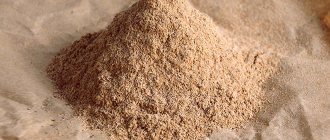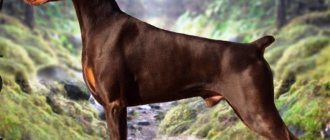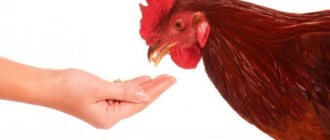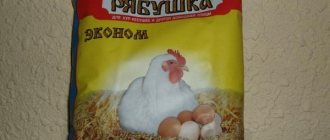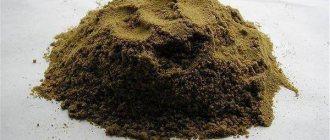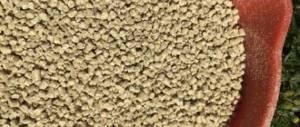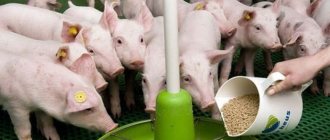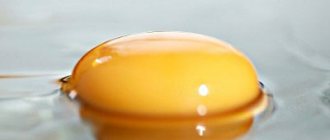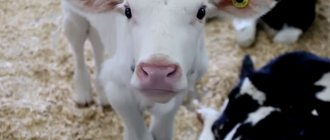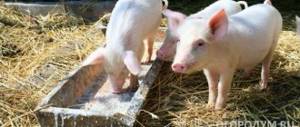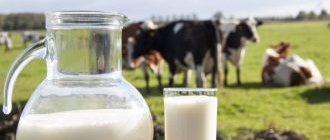Peculiarities
To obtain meat and bone meal, waste from processing carcasses into meat and carcasses of dead livestock are used. The exception is, of course, animals that died from unclear causes or from infectious diseases. The production process begins with the cooking of primary raw materials - only after that it is crushed and sifted through a sieve. Then you need to remove all metal inclusions using magnetic separators.
Modern technology for producing meat and bone meal involves treating it with substances that suppress oxidation. Thanks to them, fat does not spoil.
The product is completely ready for use - brownish powder. Standard requirements for meat and bone meal for cows include the absence of a musty or putrid odor. Equally important is the uniformity of flour consistency: it must not contain granules larger than 0.012 m.
Chemical composition of artificial food:
- from 30 to 50% protein;
- from 13 to 20% fat;
- from 26 to 38% ash residue;
- up to 7% water (maximum);
- carnitine;
- bile acids;
- serotonin;
- thyroxine;
- glutamic acid;
- ATP acid.
Compared to pure meat, meat and bone meal contains more calcium. Despite this, it is considered suitable for high-protein diets. Product rich:
- essential amino acids;
- phosphorus;
- sodium
Returning to the production technology of meat and bone meal, it is worth pointing out that before processing, raw materials are scrupulously examined by specialists in microbiological and chemical laboratories.
They throw away and dispose of any contaminated or toxic pieces. Cooking of “allowed” raw materials is carried out as carefully as possible.
Then it needs to be cooled to 25 degrees. The bags into which the prepared mixture is placed take a very long time and are carefully disinfected.
How to use?
The introduction of meat and bone meal into the diet is practiced for the reason that it supplies many valuable vitamins and minerals. It is important to know that the same product is also suitable for:
- for small livestock;
- for pigs and hogs;
- for birds of all types.
It is noted that the use of this product helps reduce costs, while at the same time you can achieve better quality of finished meat or milk. Meat and bone meal should be given in a mixture with mash or with concentrated feed.
Heat treatment of feed after mixing with flour is unacceptable.
The maximum input (by weight) for large and small cattle is from 0.01 to 0.1 kg per animal per 24 hours. Since both bone and meat and bone meal contain a lot of proteins and fats, they should be stored according to strict rules.
Only dry rooms that are well ventilated are suitable. Only diffuse sunlight should reach the food. Warming up the air to more than 30 degrees is unacceptable. It is important to know that the shelf life of meat and bone meal should be strictly observed. A product that has spoiled or expired can be simply dangerous and, at best, useless.
Timing and types
Each type has its own composition and corresponds to the source material. Factors influencing the duration of storage: quality of grinding, packaging and room conditions (temperature, humidity, ventilation, proximity of substances with odors).
| Name | Tara | Place | ||
| Temperature °C | Humidity % | Neighborhood | ||
| Wheat | From paper, fabric, plastic | +5-15 | 60-70 | No foreign odors |
| Rye | Glass or plastic | 20 | 70 | |
| Linen | Vacuum packaging | +5-10 | ||
| Corn | Hermetic | +5-15 | 60-70 | |
| Oatmeal | Paper "breathable" | +20 | 60 | |
| Buckwheat | Made from fabric, paper | Up to +25 | 70 | |
| Pea | From paper or fabric | Up to +25 | 70 | |
| Pumpkin | Factory | +5-15 | 60-70 | |
| Barley | Glass, metal, tightly closed | up to +18 | 60 | |
| Rice | Glass, hermetically sealed | +5 — 15 | 60 | |
| Meat and bone | Tightly sealed packaging | Up to +30 | 75 | Not limited |
| Fish | Tightly closed | +20-30 | 75 | |
Additional Information
Dry matter accounts for 90% of the mass of the product, and nitrogen-free extractive substances account for 4.6%. According to the chemical analysis of qualitative samples, the following picture was obtained:
- digestible proteins – 34.1%;
- proteins subject to breakdown in the rumen – 31.278%;
- proteins that cannot be broken down in the rumen – 8.822%;
- lysine – 2.17%;
- meteonine and cystine (together) – 0.88%.
The mineral composition is also noteworthy. Calcium accounts for 14.3% of the mass, phosphorus – 7.4%. In third place (1.4%) is potassium, thanks to which meat and bone meal has a positive effect on the heart. This product contains trace amounts of magnesium (0.18%) and sulfur (0.25%). Of the microelements it is worth noting:
Meat and bone meal for cattle
By nature, cows are herbivores. The basis of their diet is fresh grass or hay. But from such food the body cannot obtain all the nutrients, minerals and vitamins necessary for growth and development. To replenish missing nutrients, breeders supplement basic livestock feed with various feed additives. And one of the most popular among them is meat and bone meal.
Meat and bone meal for cattle
Nuances with animal flour
Protein is required for complete nutrition of domestic animals and poultry. By processing natural waste from slaughterhouses and fisheries, a feed additive is obtained.
Fish
The basis is fish waste. Shelf life: 6 months at 18% fat, one year at less. Conditions of keeping: closed containers, inaccessible to animals.
A room with a temperature no higher than +30 °C, humidity no more than 75%. The biological content of the product does not allow storage in a hot room. After the expiration date, a putrid odor, caking of the product, and color change appear.
Meat and bone
Feed flour is an additive for animals and birds. Made from canned animal waste. Stored in original packaging, the opened part must be secured with clamps after use.
Can be placed in a closed container. The utility unit or warehouse must be well ventilated, dry, and have a temperature of up to +30 °C.
When overheated, the fat contained in flour decomposes, resulting in toxicity. Spoiled product should not be given to animals. The expiration date indicated on the packaging is 1 year.
What is meat and bone meal?
Feed additives for cattle are designed to increase the metabolic rate in the body, saturate it with protein and minerals, and accelerate growth processes. The consequence of this is an increase in milk productivity and a more intensive increase in the weight of the animal.
Meat and bone meal has the same effect on the cow’s body. This additive is a powdery mass with a fine fraction. The color of the substance is dark brown. Also distinctive is its distinctive smell.
Compound
The composition of meat and bone meal is based on easily digestible protein. In first class products its content reaches 50–52%. In the lowest quality mixtures of the third class, its share hardly reaches 30%. In addition to protein, the powder includes:
- fats – from 13 to 20%;
- water – 9–10%;
- fiber – about 2–3%;
- ash – from 26 to 38%.
Each type of flour includes all of the specified components. The only difference between them is their ratio. In the compositions of the first class, the main share falls on protein. In the second and third grades, the percentage of fat and water increases significantly, while at the same time the proportion of protein decreases.
Reference. Additives for cows of all three classes are allowed for use in feeding. But formulations with increased fat are less effective for animals.
Feed additive manufacturing process
Meat and bone meal is produced on an industrial scale using a special, strictly followed technology. The production process includes the following stages:
- Suitable raw materials are procured. Its role is mainly waste from enterprises specializing in meat processing.
- The prepared raw materials are tested in special laboratories for the presence of pathogens of infectious diseases. If they are identified, infected parts of the carcasses are discarded.
- The mass allowed for production is thoroughly boiled.
- During the cooling process, the temperature of the raw material drops to 25 degrees. After this, it is sent for grinding. Special installations give the mass a similar appearance to powder.
- Then, using special equipment with a sieve, the crushed fraction is sifted, separating only flour from it.
- Using machines that create magnetic radiation, metal particles are extracted from flour.
- Semi-finished products are exposed to special antioxidant substances. They allow the natural components of the supplement to not deteriorate longer.
- Special fabric, paper or plastic bags are thoroughly disinfected, after which the finished mixture is placed in them.
It is worth noting that in addition to waste from meat processing plants, carcasses of deceased animals from private farms are also allowed for use. The main criterion for this is the absence of infectious diseases.
Main stages and principles of manufacturing
This mixture can be prepared at home, but it is a very labor-intensive process. You will need a special crusher that operates on the principle of a large size and powerful coffee grinder. It is much easier to buy a finished product, especially for a large farm.
At enterprises, bone meal is made as follows:
- The carcasses of dead animals are butchered. The meat is steamed and then cooled.
- The prepared meat and bones are crushed in a special crushing machine.
- The crushed product is sifted to separate large residues.
- The powder is poured into a magnetic separator to remove small metal impurities.
- The mixture is treated with an antioxidant to prevent the fat components from spoiling.
The mixture is then packed into bags of various sizes and sent to warehouses. If only animal raw materials were used, production technologies were followed, and stores receive a valuable nutritional supplement.
Residues from meat production are also used to make this mixture. These are different types of trimmings; their use has no commercial benefit. The quality of such flour, subject to all rules, remains high.
Instructions for use for cattle
If meat and bone meal is purchased by a breeder for feeding cattle, then it is best to choose for this purpose formulations made from waste pig and poultry carcasses. Mixtures based on sheep and cow raw materials have a composition similar to them. But researchers have discovered that such products may contain the causative agent of mad cow disease, which cannot always be identified during laboratory testing and killed during processing.
Flour is fed by adding it to other cattle feed. In its pure form, cows often refuse to eat it. The animal most readily eats such a supplement together with combined feed, cereal grains or bran. The animals are accustomed to the mixture gradually over the course of a week. At the same time, the share of flour in food is increased from 10 to 100 g per day.
This approach assumes the following qualitative changes in livestock productivity:
- growth of young animals increases;
- daily milk yield increases;
- milk fat content increases;
- the fertility of cows improves;
- the quality of meat products improves.
Bone meal as a fertilizer: benefits and application features - advice from the Russian Agricultural Center
In the spring, gardeners and gardeners are actively preparing for summer workdays on their plots, cultivating the land, purchasing fertilizers and pest control products.
One of the popular organic fertilizers is bone meal. Employees of the Pskov branch of the Russian Agricultural Center told CDI what it is and how to use it correctly.
Bone meal, or phosphonitrogen, contains a lot of useful substances. It also contains animal fats and biologically active substances. They are easily absorbed by plants and improve soil structure. Bone meal is used as a phosphorus fertilizer in crop production - added as plant nutrition.
Bone meal is rich in macro and microelements, such as nitrogen, phosphorus, calcium, magnesium, iron and zinc. You can also reduce the acidity of the soil using bone meal.
Bone meal decomposes in the soil in 5 to 8 months. Thus, plants can receive nutrition throughout the spring and summer period.
“The use of such fertilizing increases the yield of fruit crops, ” explain employees of the Russian Agricultural Center. – Nitrates can accumulate after improper fertilization with manure or bird droppings, but this does not happen after using bone meal.
Bone meal can be added in moderate quantities to the soil for seedlings and indoor plants, even a couple of weeks before harvesting. This fertilizer is also used to make compost.
Bone meal application rates
Bone meal is sold in powder form and must be evenly distributed over the soil in which garden crops will grow. You can also add bone meal to water, let it brew, and use it as a liquid feed. It is permissible to cultivate the soil after watering or pour it directly into the hole when replanting.
For fruit trees, it is recommended to use bone meal once every three years, as well as after damage to the root system or replanting. The common average fertilizer rate is 200 grams per 1 square meter of land.
“Bone meal helps trees form buds and recover after abundant fruiting, ” they say in the Pskov branch of the Rosselkhozcenter.
When transplanting berry bushes and other berry crops in the spring, it is recommended to pour 50-70 grams of bone meal into the hole.
When transplanting flower bulbous crops in the spring, for example, tulips, daffodils, lilies and others, you can add 15 grams of the substance to each hole.
For feeding indoor plants, it is recommended once a year: the norm is 5-7 grams per liter of soil.
Bone meal combines well with nitrogen-containing fertilizers. The use of bone meal allows you to increase yield.
Side effect
In general, all components included in the composition are natural and harmless to the cow’s body. But they give a positive effect only if the animal feeding standards indicated on the packaging are observed. This mixture contains an increased amount of protein. Therefore, if these standards are exceeded, cattle may develop amyloidosis. This disease is fraught with a disorder of protein metabolism, as a result of which protein compounds are deposited in the tissues of internal organs, interfering with their normal functioning.
Attention! Side effects also occur when feeding animals stale products. The use of rotten additives leads to the development of pathogenic microflora in the cow’s digestive tract. As a result, the animal develops various diseases.
How to find out what has gone bad
Cereals and legumes contain large amounts of fat. Over time, they lose their qualities, grow old, and deteriorate. Also, before purchase, the goods could have been stored in warehouses that did not always meet the requirements, and how long they stayed there is unknown.
- the smell of bitterness;
- mold smell;
- the smell of sour dough;
- rolling into lumps;
- color change;
- the appearance of a large number of insects.
Important: to avoid spoilage of the product, you should think about the advisability of buying flour in reserve.
Is it possible to use expired
To preserve your own health, you should not consume products that have expired. Flour is no exception. Violation of storage technology and expired use are fraught with the appearance of mycotoxins that can have a detrimental effect on the human body.
Potato stick leads to the development of endocarditis, peritonitis, meningitis, inflammation of the intestines, joints, gall bladder, food intoxication (poisoning with nausea, vomiting and disorder), allergic reactions. The use of such a product is strictly prohibited.
Storage rules
Proper storage of the supplement will significantly reduce the risk of side effects, as well as maximize the shelf life. It assumes the following conditions:
- storage of meat and bone meal in bags with a volume of no more than 50 kg;
- maintaining a constant temperature regime in the warehouse, with an upper limit not exceeding 30 degrees;
- eliminating drafts in the storage area;
- maintaining optimal air humidity of 75% in the warehouse;
- sunlight should not reach bags of flour through windows;
- Children and other pets should not have access to flour supplies.
Attention! Such products are transported exclusively in original packaging. Moreover, during transportation the additive should not be exposed to moisture or direct sunlight.
If all the specified points are observed, meat and bone meal can be stored in a sealed bag for 1 year. If the storage technology is broken, the fats and proteins in the composition deteriorate. Feeding animals in this case will not only not bring the desired effect, but can also harm the living creatures.
According to GOST
- GOST 26791-89 “Grain processing products. Packaging, labeling, transportation and storage” applies to flour, cereals, flakes, oatmeal, and food bran.
- GOST R 52189-2003, GOST R52809-2007, GOST 14176-69 “Wheat, rye, corn flour. General technical conditions" - justification for the production of grain products.
- GOST R 31645-2012 “Flour for baby food. Technical conditions" applies to products obtained from rice, oat, and buckwheat cereals, thermally untreated, requiring cooking, intended for quick preparation of dishes.
- SanPiN 2.3.2.1078-01 “Hygienic requirements for safety, nutritional value.”
- SanPiN 2.3.2.1324-03 “Hygienic requirements for shelf life and storage conditions.”
